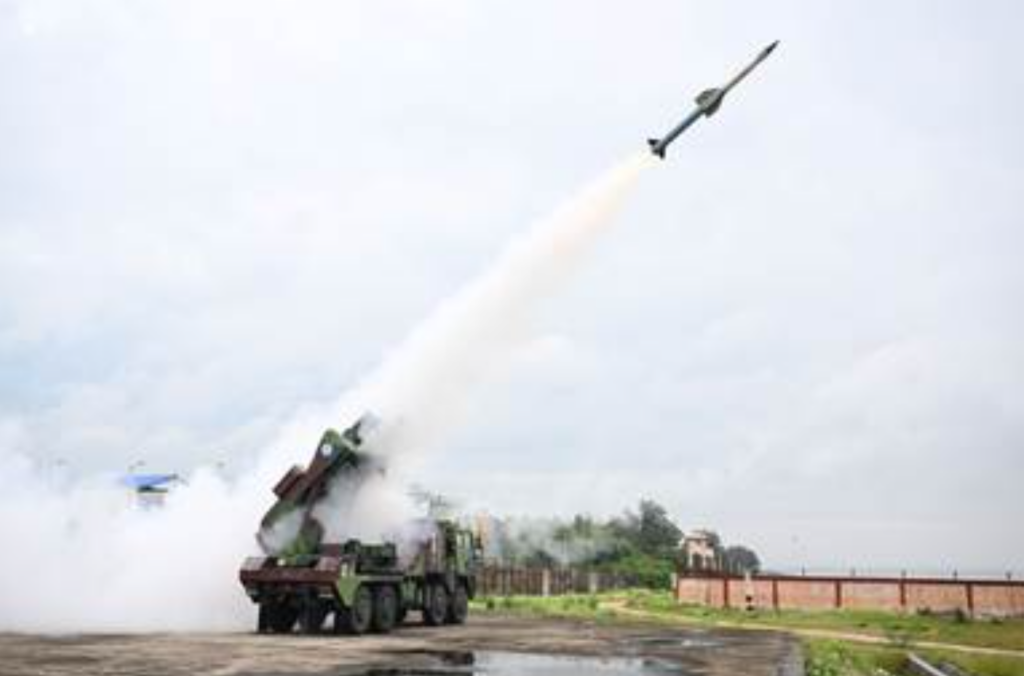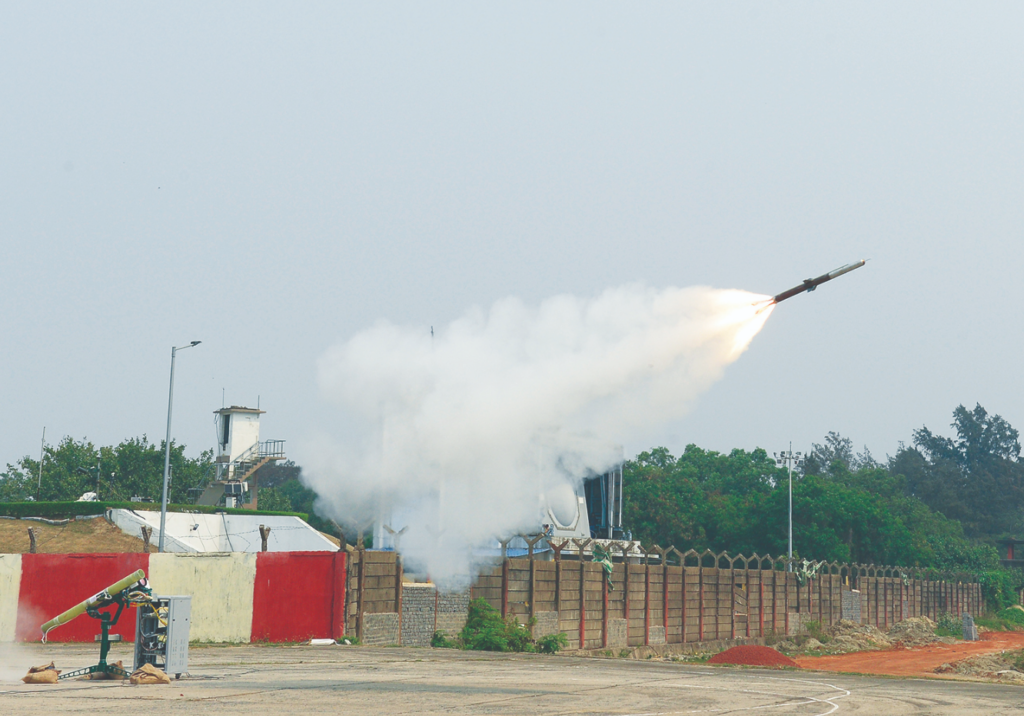India Successfully Conducts Maiden Flight Tests of New Integrated Air Defence Weapon System
On 23 August, India’s Defence Research and Development Organisation (DRDO) successfully conducted the maiden flight tests of the Integrated Air Defence Weapon System (IADWS) off the Odisha coast. In a social media post, Defence Minister Rajnath Singh noted that the flight-test “has established the multi-layered air-defence capability” of India and “is going to strengthen area defence for important facilities.”
IADWS is a multi-layered air defence system consisting of indigenously developed Quick Reaction Surface to Air Missiles (QRSAM), Advanced Very Short Range Air Defence System (VSHORADS) missiles, and a high-power laser-based Directed Energy Weapon (DEW). Each layer is designed to counter different aerial threats from fast-moving drones to low-flying targets. This all-Indian system underscores the push for self-reliance in defense technology. Research Centre Imarat and the Centre for High Energy Systems and Sciences (CHESS) are the DRDO labs responsible for the development of VSHORADS and laser components respectively. The integrated operation of these components is managed by a centralized command-and-control centre developed by DRDO’s Defence Research & Development Laboratory (DRDL). During the test, a high-power radar, secure communication links and battle-management software coordinated the engagements. The QRSAM provides medium-range interception capability, while the VSHORADS missiles handle close-in threats and the laser weapon offers an ultra-short-range kill option.

In the trials, DRDO launched two fast-moving fixed-wing drone targets and a multi-rotor UAV simultaneously. Each target was assigned to a different layer: the QRSAM, VSHORADS missile, and high-energy laser DEW were guided to intercept them. All targets were successfully engaged and destroyed at varying ranges and altitudes. Instrumentation at the Integrated Test Range in Chandipur confirmed that every system component (including search radars, tracking sensors, and data links) performed flawlessly. This seamless performance demonstrated the system’s ability to coordinate missiles and lasers in real time. Senior DRDO scientists and representatives of the Indian Armed Forces observed the trials.
DRDO Chairman Samir V. Kamat congratulated the teams involved in the test. The successful tests are a strategic milestone as a former DRDO head described it as a “strategic leap” in India’s indigenous defence capability, noting that it “strengthens multi-layered air defence” and “reduces dependence on foreign systems.” The IADWS demonstration highlights India’s focus on indigenous defence technology and its goal to establish a self-reliant air defence shield.

